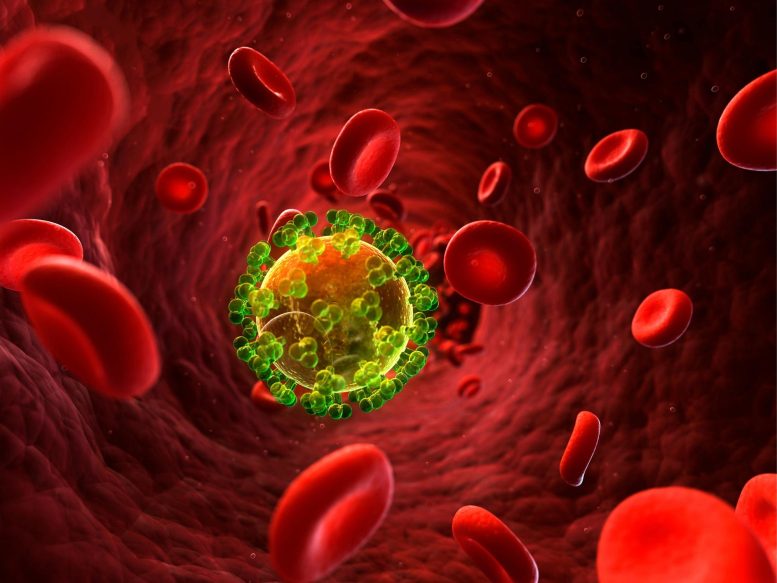
A highly virulent variant of HIV-1 has been circulating in the Netherlands for the past few decades, researchers report.
According to the new study, a cluster of more than 100 individuals infected with the subtype showed exceptionally high viral loads, rapid CD4 T cell decline, and increased infectivity. While the findings show that the HIV lineage likely arose de novo around the turn of the millennium, extensive changes in its genome make it hard to discern the mechanisms that underlie its elevated virulence.
Monitoring the virulence of HIV is an important endeavor as roughly 38 million people currently live with the virus. However, outside of recent studies on SARS-CoV-2 variants, an understanding of the evolution of virulence in viruses beyond theoretical analyses is lacking.
Within the ongoing BEEHIVE (Bridging the Epidemiology and Evolution of HIV in Europe) project, Chris Wymant and colleagues identified more than 100 individuals with a distinct strain of subtype-B HIV-1 – the “VB variant” – which was characterized by high viral loads and nearly double the rate of CD4 cell decline compared to individuals with other subtype-B HIV strains.
According to Wymant et al., by the time these individuals were diagnosed, they were vulnerable to developing AIDS within 2 to 3 years. Further analysis of the VB variant showed significant changes across the genome affecting almost 300 amino acids, which make understanding why this particular variant is so virulent difficult.
“Observing the emergence of more virulent and transmissible HIV is not a public health crisis,” writes Joel Wertheim in an accompanying Perspective, which discusses how and why viruses’ virulence evolves. “Let us not forget the overreaction of the claim of “Super AIDS” in 2005, when alarm was raised over a rapidly progressing, multidrug-resistant HIV infection found in New York that was ultimately restricted to a single individual.”
Wertheim ends the Perspective by discussing how the findings of the study by Wymant and colleagues are relevant to the COVID-19 pandemic, and the evolution of virulence in SARS-CoV-2.
For more on this research, see Highly Virulent and Destructive New HIV Variant Discovered in the Netherlands.
Reference: “A highly virulent variant of HIV-1 circulating in the Netherlands” by Chris Wymant, Daniela Bezemer, François Blanquart, Luca Ferretti, Astrid Gall, Matthew Hall, Tanya Golubchik, Margreet Bakker, Swee Hoe Ong, Lele Zhao, David Bonsall, Mariateresa de Cesare, George Mac, Intyre-Cockett, Lucie Abeler-Dörner, Jan Albert, Norbert Bannert, Jacques Fellay, M. Kate Grabowski, Barbara Gunsenheimer-Bartmeyer, Huldrych F. Günthard, Pia Kivelä, Roger D. Kouyos, Oliver Laeyendecker, Laurence Meyer, Kholoud Porter, Matti Ristola, Ard van Sighem, Ben Berkhout, Paul Kellam, Marion Cornelissen, Peter Reiss, Christophe Fraser, the Netherlands ATHENA HIV Observational Cohort and the BEEHIVE Collaboration, 3 February 2022, Science.
DOI: 10.1126/science.abk1688


0 Comments